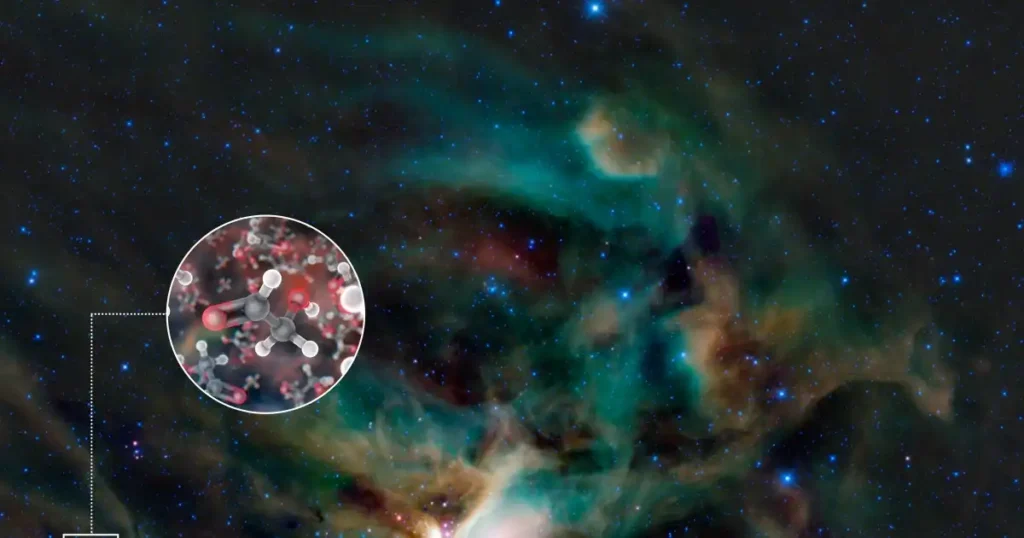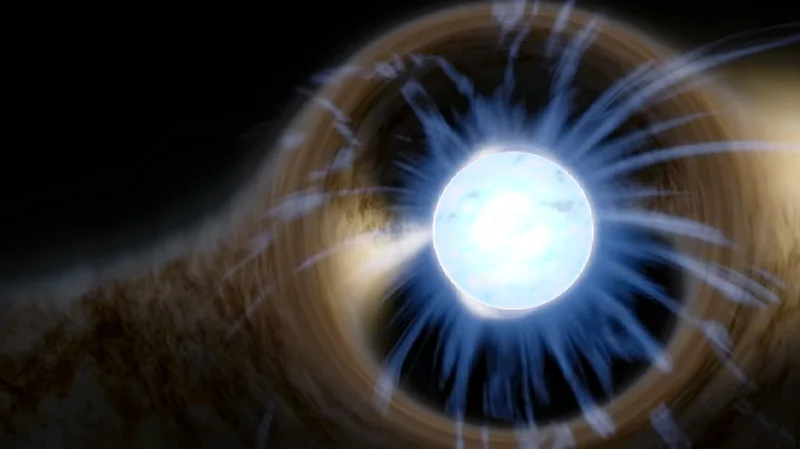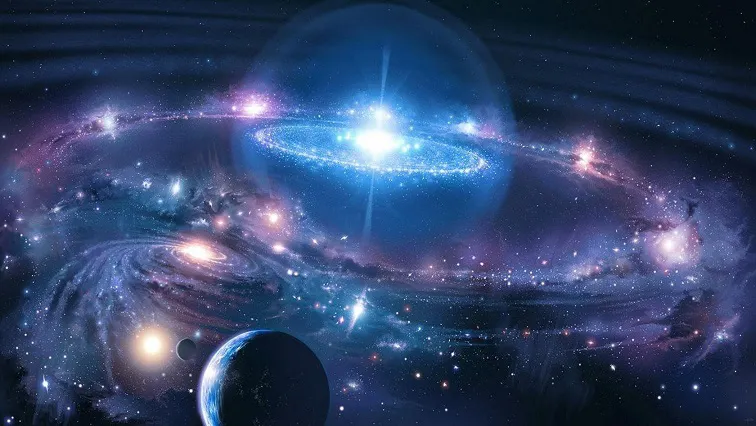If you’re looking for the Top 10 Amazing Facts About The Universe, then you are at the right place. In this article, we will discuss the Top 10 Amazing Facts About The Universe.
With the development of science and society, the footsteps of our human exploration have extended from the earth to all things in the universe. After years of research, scientists have mastered a lot of information about the universe, and they are quietly changing all the time. There are many things in these changing corners of the universe that are very surprising to us humans. If scientists hadn’t mastered clear evidence, you would never have thought that “there would be such things in the universe”. Let’s take a look at these Top 10 amazing facts about the universe.
Top 10 Amazing Facts About The Universe
1. The moon is slowly shrinking

The moon is likely to be the product of the collision between the earth and a protoplanet, and many asteroids later hit it. It can be said that the origin is quite rough. The heat generated by these impacts and the decay of radioactive elements gradually dissipated over millions of years, shrinking the Moon as it cooled. The Moon is like a rotten apple, gradually wrinkling its surface.
NASA’s Lunar Reconnaissance Orbiter satellite once photographed the “lobe-shaped steep slope” on the surface of the moon. This is because the interior of the moon cools and shrinks, and the surface cracks like loose skin, thus forming huge cliffs. Based on the estimate of the largest steep slope formed in the past billions of years, the radius of the moon has shrunk by about 91 meters.
2. There is a water world in the universe

Scientists at NASA’s Jet Propulsion Laboratory used radio telescopes to detect the signature of water molecules in the signal from the quasar APM08279+5255. And this kind of star is in a distant galaxy 12 billion light-years away and has a lot of water vapor, which is 140 trillion times that of the earth’s ocean.
Quasars are active galaxies powered by supermassive black holes that spew radiation almost directly at us. The energy produced by APM08279+5255 is about 1000 trillion times that of the sun, and scientists estimate that the water contained in this quasar is 4000 times that of the entire Milky Way. The region where water was detected is the gas hundreds of light-years wide near the center of the galaxy. This gas may also eventually be swallowed by the black hole, bringing a large amount of water vapor to the black hole.
3. Cosmic Jet Power Plant

In the distant 3C303 galaxy, there actually exists the most powerful current in the universe. Its power is equivalent to 1 trillion lightning bolts, or 1 million trillion amperes of electricity. What is even more surprising is that the source of this current is the jet near the speed of light emitted by the supermassive black hole at the center of 3C303 (referring to the 303rd celestial body in the third catalog of the Cambridge Radio Source).
Black holes gobble up vast amounts of matter, including gas, stars, planets, and asteroids, which are shredded before entering and swirling around the superhot gas around the black hole. These disks of gas are entangled by huge magnetic fields, which also cause some of the gas to swirl into the jets, and also generate huge electric currents in the vortices. Thankfully, all of this is still very far away, about 2 billion light-years away.
4. Planets with long tails

Astronomers call Gliese 436b a “hot Neptune”. It is a very weird, hot planet about the size of Neptune, but very close to its parent star. Gliese 436b is about 33 light-years away. The most peculiar thing about this planet is that it has a comet-like tail.
Gliese 436b has a thick hydrogen atmosphere, but since its orbit is only 4 million kilometers away from its parent star, stellar radiation can evaporate the planet’s atmosphere. Gliese 436b orbits the star at high speed, taking only 2.6 Earth days for a circle, and the dissipated hydrogen cloud forms a long comet-like tail behind the planet. Scientists speculate that Gliese 436b has already lost 10% of its atmosphere and that hydrogen gas was lost even faster when the star was more active in the past.
See also ”Top 10 Most Beautiful Fishes in The World”
5. Rum-flavored gas clouds

Astronomers used the IRAM radio telescope to observe Sagittarius B2, a cloud of gas at the center of the Milky Way and detected a substance called ethyl formate. This aromatic compound imparts sweetness to fruits, wines, and flowers and smells like rum; it is also responsible for the particular flavor of raspberries.
Ethyl formate is made by reacting with ethanol and formic acid; ethanol is found in gas clouds that form stars, while formic acid is made of hydrogen, oxygen, and carbon atoms. Ethyl formate molecules absorb stellar radiation and re-emit it at radio wavelengths, so we can see it through radio telescopes. Ethyl formate is one of the largest molecules ever detected in space and is an important building block of amino acids, which are essential to life as we know it.
6. The stars in the universe can act as lenses

An important argument of general relativity is that gravity can bend space-time. When light passes through the curved space-time, it will be magnified like a lens. Scientists call it “gravitational lensing“. Massive galaxy clusters full of the dark matter often produce this effect, magnifying the brightness of distant galaxies, and sometimes single stars and even planets can also act as gravitational lenses.
Astronomers use this phenomenon to search for microlensing events, which brighten a star when an unseen planet and a distant star are briefly aligned in front of them; even if the planet is not visible, we can still surmise its presence. The sun can also act as a gravitational lens. The focus of the solar telescope is 550 times the distance between the earth and the sun, which is five times farther than the current position of Voyager 1. In theory, if we fly to the focal point and put a space telescope there, we can use the gravity of the sun as another set of lenses.
7. Sugar exists in the universe

Astronomers use radio waves to observe the universe and discover that sugar exists in space. Astronomers used Chile’s 66 radio telescopes, the Atacama Large Millimeter and Submillimeter Array (ALMA) to observe the forming binary star system IRAS16293-2422, and found sugar molecules in the surrounding gas clouds – glycolaldehyde.
Why is there sugar in the universe 400 light-years away? Molecular clouds in star-forming regions are like huge natural chemical laboratories, with all kinds of complex molecules likely to form links. Sugar molecules are quite complex and are an indispensable energy source for life. Although there is no life in the gas clouds near the binary star system, the presence of sugar found here indicates that the ingredients of life may come from the nebula. There are many very complex molecules in space, and even more complex molecules may naturally arise in nebulae, such as amino acids and proteins, the key components of life.
See also ”The Top 10 Hidden Paradises in The World”
8. A spoonful of a neutron star weighs 10 billion tons

Everything about neutron stars is pretty extreme. It can compress twice the mass of the sun into a very small volume, and the gravity felt on the surface of the planet is 200 billion times that of the earth. Neutron stars have strong magnetism, and the most magnetic ones are called magnetars. If there were a magnetar at the same distance from us as the moon, it could demagnetize all credit cards on Earth. As the neutron star spins, particles are accelerated near the magnetic poles, and beams of energy are emitted along the axis of rotation; if we happen to be right in front of the spinning beams, we can see flickering pulsars.
Neutron stars can form when massive stars end their lives in supernovae. When nuclear fusion ceases, the star collapses inward and compresses the core. Shockwaves bouncing off the core destroy the star in a supernova, leaving a compressed, dense core. With a diameter of only 11.3 kilometers, when electrons and protons are all compressed together, a celestial body composed entirely of neutrons is formed. A teaspoon of neutron stars can weigh up to 10 billion tons.
9. Solar energy holds 1.3 million Earths

We usually look at the sun during the day and think it is not big, even as big as the fifteenth moon. Just because the moon is much closer to us, the average distance is about 400,000 kilometers, while the sun is 150 million kilometers away from us, so the sun looks about the same size as the moon, but the sun is much bigger.
The diameter of the sun is 1.4 million kilometers. In comparison, the earth is much smaller, with a diameter of only 12,742 kilometers. Even the diameter of Jupiter is only 140,000 kilometers. But the sun is not a large star, UY Scuti is one of the largest known stars, with a diameter of 2.4 billion kilometers; if this monster star is placed in the position of the sun, its range can even extend to Saturn.
10. There is a greeting from the earth in the universe

Launched in 1977, the two Voyager spacecraft have completed their journey to visit the planets and continue to travel to the depths of space today. With a glimmer of hope that aliens or even future humans may discover these two spacecraft, the spacecraft carried a golden record designed by the famous astronomer Carl Sagan.
This record contains natural sounds, music, images, and greetings from 55 languages on earth. The record cover describes the hometown of Voyager 1 and also provides instructions for aliens who are not familiar with the record player.
See also ”The Top 10 interesting facts About Dubai”
Did you know any of the above amazing facts about the universe in advance? What other amazing facts about the universe do you know?


